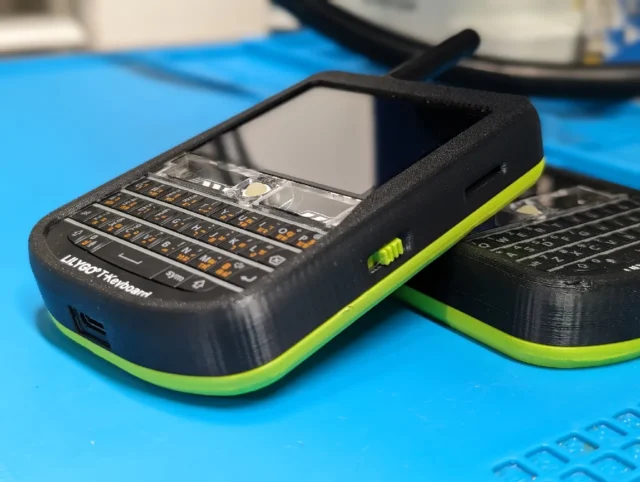Radio communication has long been a cornerstone of fast and reliable information exchange—whether in industrial environments, logistics, public services, or even hobby radio use. In recent years, advancements in technology have introduced a powerful alternative to traditional VHF/UHF radio systems: Push-to-Talk over Cellular (PoC). This modern approach combines the simplicity of push-button communication with the global coverage and flexibility of cellular networks.
This article offers a comprehensive and accessible overview of how PoC systems work, their advantages and drawbacks, how they differ from conventional radios, and where the technology is headed. It’s written for both newcomers and professionals seeking a clear and practical understanding.
How PoC technology works
PoC allows radio-style voice communication over mobile data networks—3G, 4G, LTE, 5G, or even Wi-Fi—instead of traditional radio frequencies.
Basic operation:
- The user presses a push-to-talk (PTT) button on a compatible device or smartphone app.
- The device captures the audio and converts it into data packets.
- These packets are sent via the internet through a PoC server to the intended recipients.
- The recipients hear the voice message almost instantly, regardless of their location.
In essence, this creates an IP-based walkie-talkie system without geographic limitations.
Devices and software behind PoC systems
Hardware:
- PoC handheld radios – Look like traditional radios but use SIM cards and mobile data.
- Smartphones – Can function as PTT devices with the right app.
- Dispatcher consoles – Office-based control units with map integration and voice management.
- Vehicle-mounted units – Ideal for fleets, logistics, and mobile teams.
Software platforms:
- Common options include Zello, RealPTT, ESChat, iTalkPTT, Talkpod, and others.
- Many offer GPS tracking, audio recording, and integration with enterprise systems.
Why are PoC systems gaining popularity?
Key advantages:
- Unlimited range – As long as there’s network coverage, communication works worldwide.
- Flexible scaling – Adding a user is as simple as issuing a license and installing an app.
- Multiple call types – One-to-one, group, and dispatcher-controlled communication.
- Live GPS tracking – Know where every unit is in real time.
- Lower setup costs – No need for repeaters or frequency licenses.
Potential drawbacks:
- Dependent on data connectivity – Without network access, communication isn’t possible.
- Slight latency – Usually 0.5 to 2 seconds; not always ideal for time-critical tasks.
- Security considerations – Cloud-based systems must be configured carefully to protect data.
- Learning curve – Users unfamiliar with smartphones or apps may need some training.
PoC vs. traditional radio systems: A side-by-side look
| Feature | PoC system | VHF/DMR radio system |
|---|---|---|
| Range | Unlimited (network-based) | Limited to local/regional |
| Transmission type | Via internet/mobile network | Via radio frequency |
| Startup cost | Low (apps + data plans) | High (infrastructure setup) |
| Scalability | Easy to scale | Limited by radio infrastructure |
| Audio quality | Good with stable connection | Excellent (especially digital) |
| User management | Web-based admin tools | Manual configuration |
| Licensing | No radio license required | Often regulated/licensed |
Where are PoC systems used?
- Industry and logistics – Warehouses, factories, transport fleets
- Security and events – Site patrols, large event coordination, crowd management
- Public utilities – Electricity, water, sanitation services
- Education and camps – For staff communication and safety
- Amateur use – SDR fans, hobbyist communities, international connections
What’s on the horizon for PoC?
- 5G expansion – Lower latency and higher reliability for voice data.
- AI integration – Smart features like message prioritization and emergency phrase detection.
- Private networks – Enterprises hosting their own PoC servers for security and control.
- Hybrid systems – Combining PoC with traditional radio networks via gateways.
- Next-gen devices – LTE-enabled radios, bodycams, and Android-based communicators.
Tips before implementing a PoC solution
- Test across carriers – Make sure coverage and performance meet your needs.
- Select the right platform – Choose between open-source and proprietary systems.
- Train your team – Proper onboarding ensures effective use.
- Secure your data – Encrypt communications and manage access permissions.
PoC technology has matured into a highly practical alternative to conventional radio systems—especially where range, cost, and infrastructure pose limitations. As 5G and AI become more accessible, PoC is poised to play an even greater role in both public and private communication environments.
Image(s) used in this article are either AI-generated or sourced from royalty-free platforms like Pixabay or Pexels.
Did you enjoy this article? Buy me a coffee!






